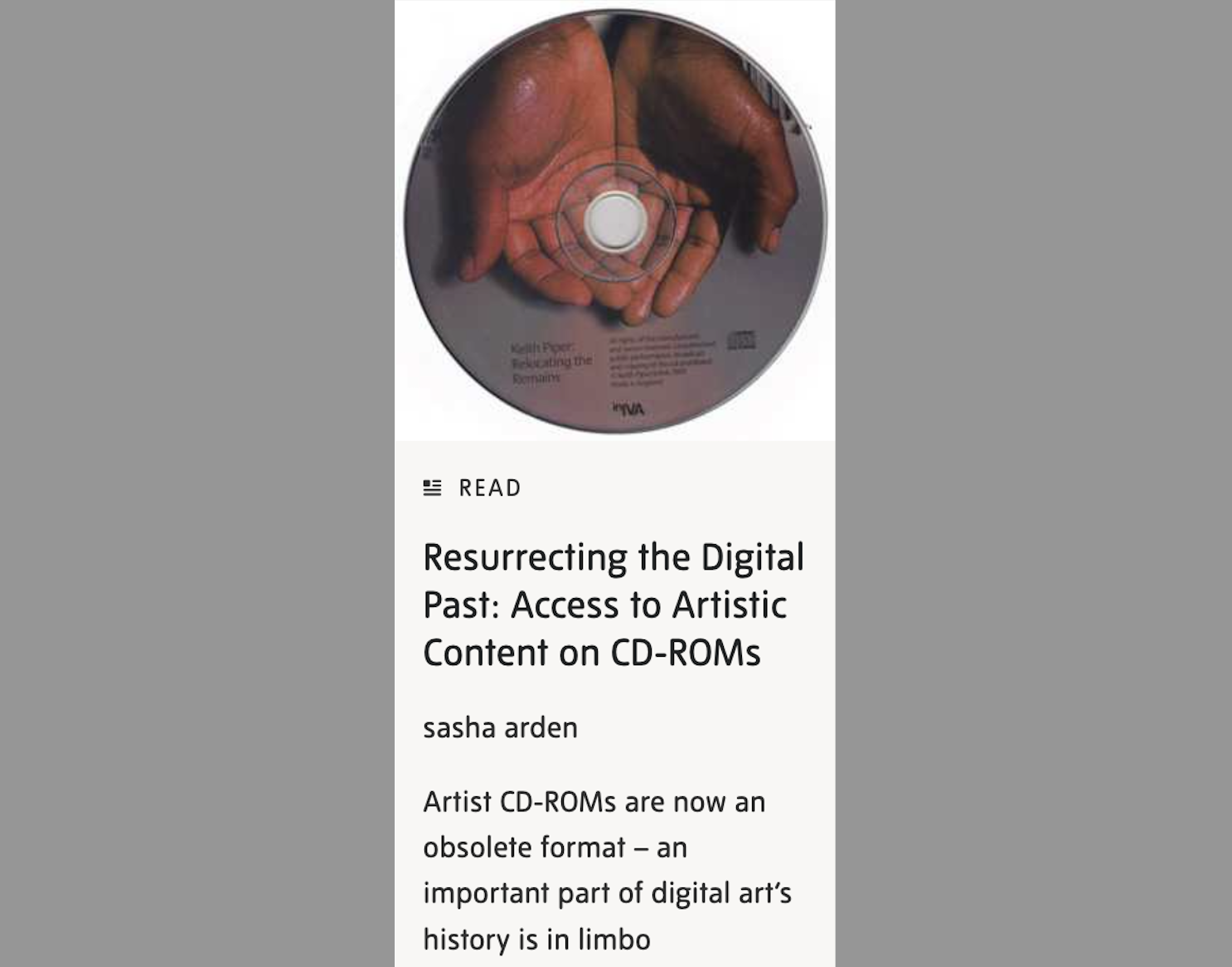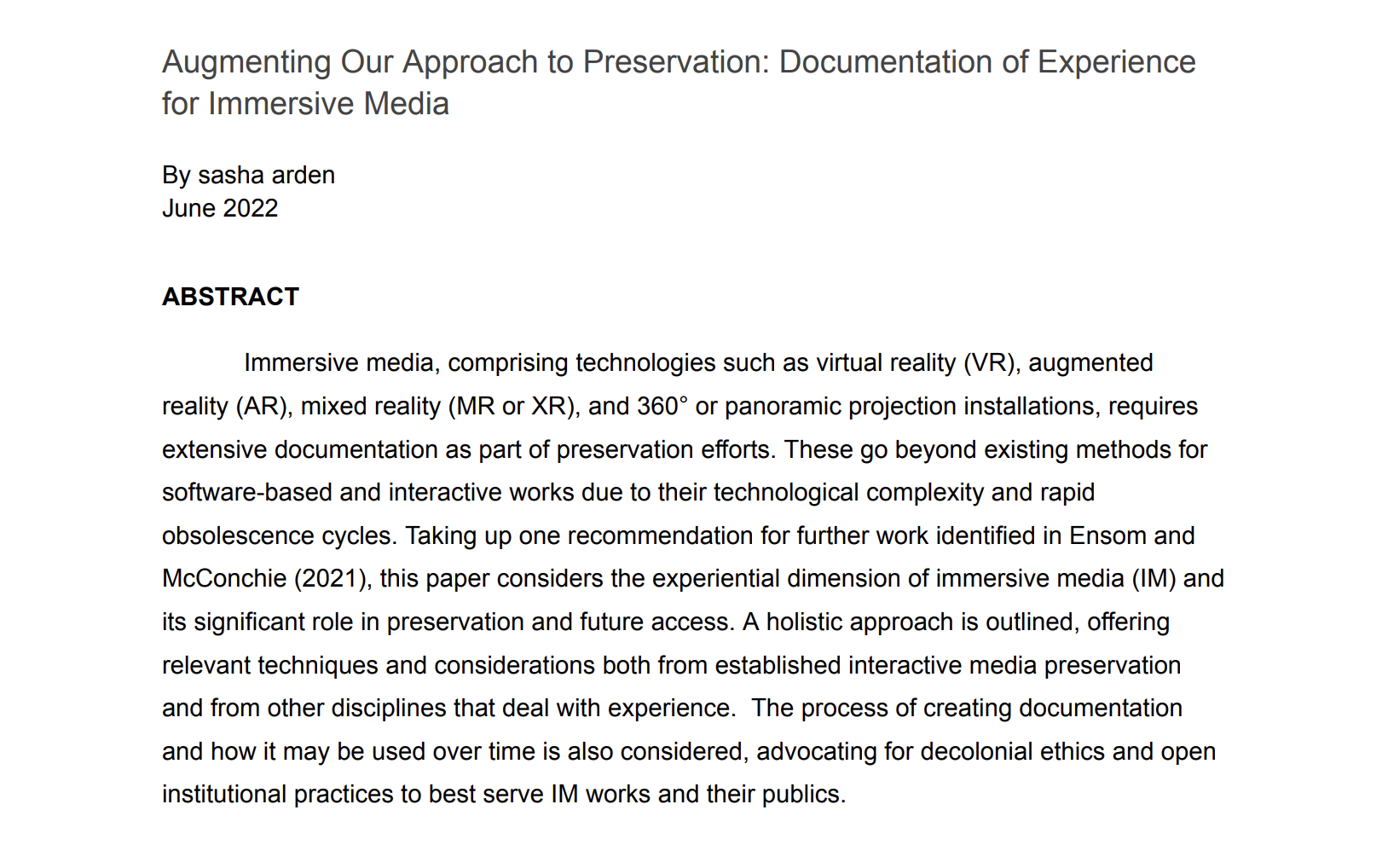Contemporary Art Review, Volume II (forthcoming)
Guided by the Light: Rethinking Approaches to the Assessment of Light-Based Artworks
Light-based artworks are a unique subset of cultural assets that challenge current stewardship strategies at collecting institutions. Incandescent bulbs have been used as an artistic medium from the early twentieth century. Following shifts in technological developments and environmental regulations worldwide, however, they can be considered obsolete. As a result, the integrity of many light-based artworks is now at risk. Substitution of light emitting diode (LED) bulbs in place of incandescents is increasingly common due to obsolescence, expense, and safety concerns. Obsolescence introduces an urgency around accurately capturing the work-defining properties of light sources. The tight linkage between their tangible and intangible elements creates vulnerabilities for the integrity of these artworks, which are exacerbated over time with increasing generation gaps after replacement of light sources. Three case studies utilizing incandescent light sources illustrate how threats to artwork stability can manifest through LED replacement, revealing the variable outcomes to this form of treatment. This research seeks to outline a holistic approach to assessing change in light-based artworks, using Fernando Domínguez Rubio’s mimeographic and neographic actions to explore a framework that broadly considers the concept of significance beyond technical characteristics and takes into account the impact of values upheld by museum practices.
MAP Journal (Media | Archive | Performance)
Integrating Change Through Documentation of Experience for Immersive Media
Immersive media (IM) is a class of technologies that aim to create an immersive environment for viewers, such as virtual reality (VR), augmented reality (AR), mixed reality (MR or XR), and 360° or panoramic projection installations. The preservation of immersive media is a growing field of research and practice, whether for historical reference of these technologies, or for re-exhibition of artistic/creative works. IM benefits from existing strategies developed for preservation of complex digital and physical media such as software-based art and installation artworks, but the unique characteristics of IM lead to unique preservation needs. Exploring how these needs may be met through expanded documentation and cataloging practices prompts reflection on how such changes could set larger institutional shifts into motion.
2021-2022 Tate Collection Care Research
This project was conducted with Tate as part of my Fourth-Year Capstone Placement to fulfill requirements for NYU’s degree in Conservation. Supervised by Pip Laurenson, I researched how artist CD-ROMs are handled within Tate’s holdings, which highlighted issues of discoverability and access for this now-obsolete medium. The publication includes context for the importance of CD-ROMs in digital art history, details of technical tools and procedures tested for access, links to online resources, and a bibliography.
These efforts received the 2022 National Archives (UK) Award for the Most Distinguished Student Work in Digital Preservation, given by the Digital Preservation Coalition.
2021-2022 Tate Preserving Immersive Media Group
This project was conducted with Tate with supervision by Jack McConchie and Tom Ensom as part of my Fourth-Year Capstone Placement to fulfill requirements for NYU’s degree in Conservation.
This paper considers the experiential dimension of immersive media (IM) and its significant role in preservation and future access. Immersive media requires extensive documentation as part of preservation efforts. These go beyond existing methods of documentation for software-based and interactive works due to their technological complexity and rapid obsolescence cycles. A holistic approach is outlined, offering relevant techniques and considerations both from established interactive media preservation and from other disciplines that deal with experience. The process of creating documentation and how it may be used over time is also considered, advocating for decolonial ethics and open institutional practices to best serve IM works and their publics.
2019-2020 EMG Review
This research explores the potential of augmented reality as a tool to preserve the experience of time-based artworks no longer able to function in their original iteration owing to damage, obsolescence, or other barriers. Elements such as moving images or kinetic motion could exist as virtual visual layers integrated with the original object or alongside it. Current workflow options and practical considerations for creating an augmented reality project are discussed, and a case study illustrates the process. Ethical concerns and issues of authenticity are also addressed, and reflection on conservation values and how artworks are experienced is encouraged.
IFA Contemporary review of Programmed: Rules, Codes, and Choreographies in Art, 1965–2018 at the Whitney Museum of American Art
Obsolescence and rapid degradation of artworks made in the past fifty years will continue to pose challenges for conservators and curators, and it is necessary to develop new approaches in order to share them with the public. Questioning the traditional limits of display and changing what information is shared within exhibitions not only enables engagement for such artworks, it also affects how viewers encounter and understand them. Putting the audience’s experience at the center of an artwork’s presentation opens up possibilities to expand the scope of exhibition beyond “looking back” at a historical work. Sharing relevant information about how a work has necessarily changed over time can bring awareness of the stakes involved in keeping cultural heritage accessible. “Experiential conservation” may be a strategy that allows viewers to better understand preservation and the choices involved in the ongoing story of exhibiting works of art like those found in Programmed, signaling a major shift in engagement with our cultural heritage.
AIC Online Community: EMG Blog
"From Immersion to Acquisition: An Overview of Virtual Reality for Time-Based Media Conservators" was an informative presentation given at the 2019 Annual Meeting by Mark Hellar, a technology consultant for cultural institutions and owner of Hellar Studios LLC, and Savannah Campbell, Media Preservation Specialist at the Whitney Museum of American Art. Mark and Savannah have both done extensive applied research on virtual reality (VR). Mark has focused on web-based VR platforms and their potential application in a museum context, while Savannah's master's thesis for NYU's Moving Image Archiving and Preservation program examined the challenges of archiving and accessing VR. The resources that they shared will be a touchstone for time-based media conservators, collection managers, and technical staff as artists increasingly use VR in their practices.
Voices in Contemporary Art (VoCA) Blog
After a morning of presentations on TBM conservation practice around the world, a round table was convened to discuss “The Interface Between the Artist and the Conservator.” Moderated by R. Luke DuBois, the panelists included artist Fernando Cwilich Gil, Lena (Carol) Stringari, and Maria Theodoraki. With each bringing an abundant, unique history relevant to the topic at hand, it promised to be an elucidating session.







